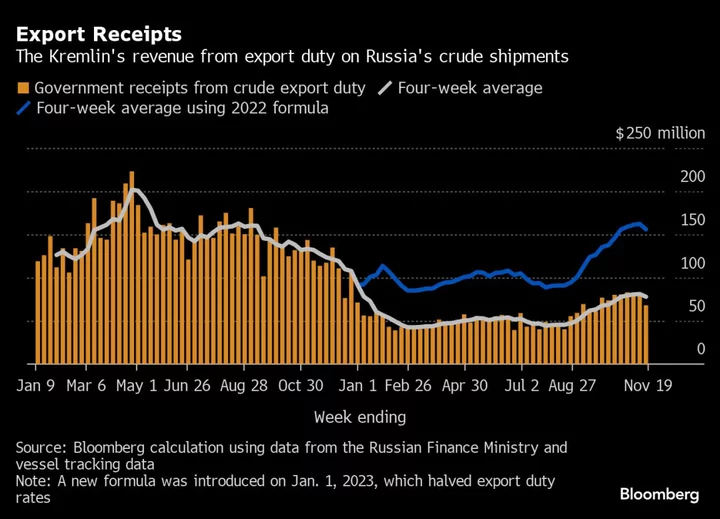
Russia Cuts Seaborne Crude Flows to Three-Month Low Before OPEC+
Russia cut back its seaborne crude exports to the lowest since August before a meeting of OPEC+ oil
2023-11-21 18:22
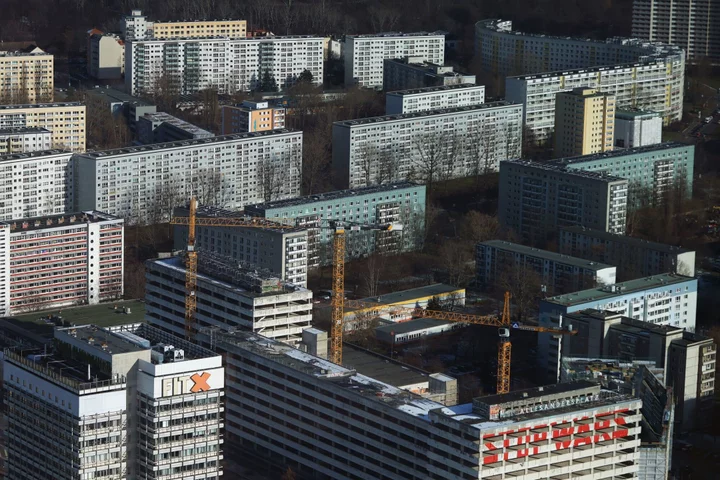
ECB Warns Banks’ Commercial Real Estate Hits Could Worsen Stress
European banks’ exposure to commercial real estate could erode financial stability if the economy is hit by a
2023-11-21 17:48
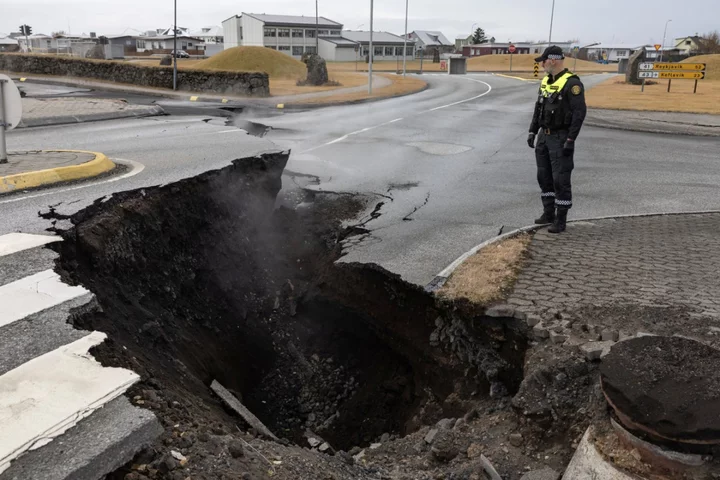
When will the Iceland volcano erupt and what happens when it does?
As an imminent eruption looms thousands of Iceland residents await their fate as their town could be wiped out within days. Thousands of earthquakes rocked the southwestern peninsula of Reykjanes on Saturday 11 November leading semi-molten rock to ravage below the surface as the tremors caused a 15km long dyke to form, cracking the community in two as the ground was pushed upwards. Some 3,400 residents from the town of Grindavik which lies on the path of the expected fissure vent eruption were forced to evacuate, they described the ‘apocalyptic’ scenes of their much-loved home town as they briefly returned to collect their belongings. The whole population waits in limbo as they fear the fate of their close-knit community, many have already lost their homes whilst others do not know if their residencies still stand as earthquakes have continued to strike. The displaced population have moved across the country as fellow Icelanders have offered their spare rooms and summer homes. Since, volcanologists have noted a change in the stage of the eruption, making it more likely to come over the next few days. Tamsin Mather, a professor of Earth Sciences from the University of Oxford told The Independent the most troubling challenge to overcome is the uncertainty of when the eruption will come. She said: “It’s being very well managed in my opinion but it could accelerate very quickly as the heightened state of activity continues.” When is it expected to erupt? The Iceland Civil Defence noted “very clear signs of magma along the dyke” less than 1km below the surface, report RUV. Víðir Reynisson, director of Civil Defence told the state broadcaster: “The likely time of something happening along the dyke, especially in the centre, if it happens, is within days not weeks. “If this continues without an eruption the chance of one decreases with time pretty rapidly. But then we see the changes at Svartsengi which introduce possibly the next stage of this.” The area near the Svartsengi power plant, about four km north of Grindavík, has entered a “new eruption phase”, an Icelandic volcanologist has suggested. The land near the power plant is swelling as a chamber some 4.5 kilometres below the surface fills with magma at a rate of around 50 cubic metres per second, according to Professor Thorvaldur Thordarson. “The land is rising much faster now. This happens simultaneously because the magma is creating space and thus raising the surface of the earth,” Professor Thordarson told Iceland Monitor. It is still unclear when the eruption will take place as Grindavik evacuees remain on tenterhooks. Professor Mather added the eruption could happen suddenly but the Icelandic Met Office are knowledegable, well-resourced and working through the night to alleviate any danger. How dangerous would an eruption be? In the worst-case scenario, an eruption could obliterate the entire town, wiping out schools, workplaces and cherished family homes. However, two walls are being built around the Svartsengi geothermal plant to divert the potential lava flow away from the plant which provides hot water used for heating for 30,000 people, says RUV. Professor Mathers said: “The lava could have an impact on the power station, the town and infrastructure. I really hope there are no fatalities or injuries as they have done everything to avoid that.” Problems could arise if the lava flows towards the power station and the town’s infrastructure, she added. The civil defence said in a conference earlier today that the risk of an eruption remains high but they cannot quantify the exact risks, say RUV. Iceland is highly susceptible to natural disasters because it lies on the Mid-Atlantic Ridge – a divergent plate boundary where the North American Plate and the Eurasian Plate are moving away from each other. The country has an eruption every four to five years. The most disruptive in recent times was the 2010 eruption of the Eyjafjallajokull volcano, which spewed huge clouds of ash into the atmosphere and grounded flights across Europe for days because of fears ash could damage aeroplane engines. Professor Mathers, an expert in Iceland volcanology explained there are multiple factors that could affect the impact of an eruption. She said: “Speculation isn’t terribly helpful but once the eruption starts, they will be able to think about the contours and the direction of the lava flow.” It is hard to predict the flow path until the eruption starts, she added. The best case scenario would be for the eruption to take place in the base of a valley, so the lava flows and does not travel far, said Professor Mather. The worst case would be for the eruption to occur on high ground so the lava can flow down over a vast area. Multiple factors could impact how destructive the explosion is, including the wind direction which influences where pyroclastic material and ash will blow. Sulfur dioxide and hydrogen sulphide will also come up in an eruption which can affect air quality across a widespread area, added Professor Mather. Scientists say an eruption would likely produce lava but not an ash cloud. What would happen to residents? Civil protection authorities told Associated Press that even if there is not an eruption soon, it’s likely to be months before it is safe for residents evacuated from the danger zone to go home. In a worst-case scenario, if the eruption does happen close to the town of Grindavík it could devastate the entire town, as earthquakes have already destroyed homes. The Icelandic Civil Defence told their state broadcaster the possibility of residents returning home to clear their homes, many have already been able to collect necessities and pets. Jóhanna Lilja Birgisdóttir, a senior psychologist at Grindavík’s social services department revealed the town’s plan for displaced schoolchildren to RUV. She said in a conference this morning there are two possible solutions: for the children to attend school where their family is staying or for school children to group together and attend schools in different parts of Reykjavík from next Wednesday. Currently, Grindavik residents can apply for short-term accommodation through a government portal, where they can stay until mid-January. What would an emergency response be? An emergency response is already underway as magma intrusion measurements predict an eruption could arrive in days. Once an episode starts, the area will be monitored for decades to come and emergency teams and experts will respond to risks as and when they come as once an eruption begins, they are better placed to track the likely disruption, explained Professor Mathers. As it stands, Grindavik residents will not be able to return home as the magma intrusion is carefully monitored along the 15km dyke Read More Iceland volcano update: Eruption could happen with just 30 minutes warning Iceland residents describe ‘apocalyptic’ scenes as they flee volcano threat Iceland volcano could erupt like a ‘can of fizzy drink’ Iceland officials reveal where volcano will likely erupt Biggest volcanic eruptions in the last 10 years as Iceland town faces devastation Is it safe to travel to Iceland? Your rights if you have a holiday booked
2023-11-21 16:22

Jamala: Russia puts Ukrainian winner of 2016 Eurovision Song Contest on wanted list
Russia has placed a Ukrainian singer who won the 2016 Eurovision Song Contest on its wanted list, state news agencies reported Monday. The reports said an Interior Ministry database listed singer Susana Jamaladinova as being sought for violating a criminal law. The independent news site Mediazona, which covers opposition and human rights issues, said Jamaladinova was charged under a law adopted last year that bans spreading so-called fake information about the Russian military and the ongoing fighting in Ukraine. Jamaladinova, who performs under the stage name Jamala, is of Crimean Tatar descent. She won the 2016 Eurovision contest with the song “1944,” a title that refers to the year the Soviet Union deported Crimean Tatars en masse. Her winning performance came almost exactly two years after Russia annexed Crimea as political turmoil gripped Ukraine. Most other countries regard the annexation as illegitimate. Russia protested “1944” being allowed in the competition, saying it violated rules against political speech in Eurovision. But the song made no specific criticism of Russia or the Soviet Union, although it drew such implications, opening with the lyrics “When strangers are coming, they come to your house, they kill you all and say ‘We’re not guilty.’” Read More Ukrainians who fled their country for Israel find themselves yet again living with war 10 years later, a war-weary Ukraine reflects on events that began its collision course with Russia With patriotic reggaeton and videos, Venezuela's government fans territorial dispute with Guyana
2023-11-21 15:28
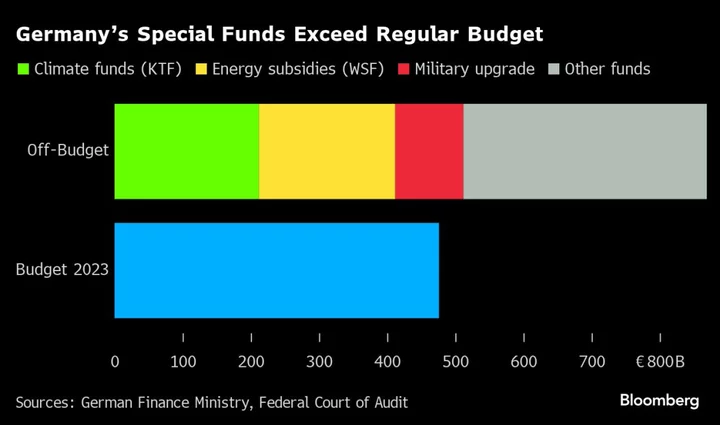
German Budget Crisis Deepens With Freeze on This Year’s Finances
Germany’s budget crisis deepened when the Finance Ministry imposed an emergency spending freeze in response to last week’s
2023-11-21 15:22

Zelensky compares attempts on his life to catching Covid: ‘First one is very interesting’
Volodymyr Zelensky said he has lost count of the number of attempts on his life, comparing them to catching the Covid-19 infection. “The first one is very interesting, when it is the first time, and after that it is just like Covid,” he told The Sun in an interview. The first attempt carried panic, he added. The president of Ukraine claimed Vladimir Putin still wanted “very much” to topple him as the war raged on for 21 months. As per Russia, the deadline for that operation was by the end of the year, Mr Zelensky told the British daily. At least “five or six” plots to kill the war-time president have been thwarted as Mr Zelensky revealed the name of Russia’s latest mission to oust him from Kyiv. “First of all people don’t know what to do with it and it’s looking very scary. And then after that, it is just intelligence sharing with you that one more group came to Ukraine to [attempt] this,” he told the tabloid. “The name of the operation is Maidan 3. It is meant to change the president. It’s bye bye. Maybe it is not by killing. I mean it’s changing. They will use any instruments they have,” he said. “So that’s the idea, to the end of the year. They have even named the operation. But you see we can live with it.” The Ukrainian president added that Russia parachuted special forces into Kyiv to assassinate him on the first day of Moscow’s invasion of Ukraine last year. From there began the operation to turn Mr Zelensky’s office and each of his next locations into a fortress. His closest team was handed rifles and body armour and his bodyguards shut off any access to his office using makeshift barricades and bits of plywood. On being asked how many attempts he has dodged, the president says he really doesn’t know. The Ukrainian president did not answer the question on whether or not Ukraine had also planned similar assassination plots in response to Russia. Mr Zelensky yet again denied the assessment on the conflict hitting a stalemate, which Ukrainian commander-in-chief Valery Zaluzhny said is due to technological and tactical parity between Russian and Ukrainian forces. “In the morale, there is no stalemate. We are at our home. Russians are on our land. Therefore there is no stalemate in this. As regards the sky, there is no stalemate. Russians have more power in that. And really, how to move forward when you can’t control the sky? (sic)” he told the paper. Ukrainian officials have strongly pushed back on suggestions they are in a stalemate with Russia after a long-awaited counteroffensive over the summer did not radically change the battle lines on the ground. In a visit to Washington last week, Andriy Yermak, head of the president’s office, provided no details but confirmed that Ukrainian forces had finally pushed through to the east bank of the Dnieper River, which has essentially served as the immovable front line between Ukrainian and Russian forces for months. However, as winter sets in it will become more difficult for either side to make large gains due to ground conditions. Read More What the papers say – November 21 Zelensky thanks world’s media for fostering support for Ukraine David Cameron meets Volodymyr Zelensky in Ukraine in first visit as foreign secretary David Cameron meets Zelensky as new foreign secretary makes first trip to Ukraine Russia admits Ukrainian troops crossed Dnipro river but says ‘fiery hell’ awaits them Ukraine declares major breakthrough in southern counteroffensive ‘against all odds’
2023-11-21 14:22
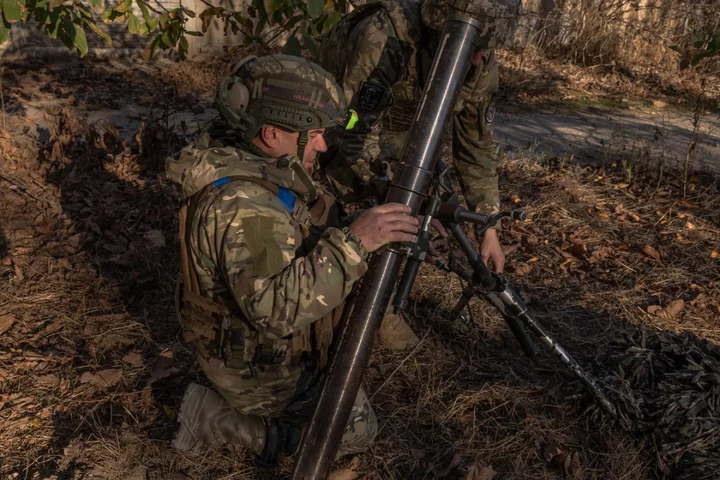
Ukrainian sniper ‘breaks world record after killing Russian soldier nearly 2.5 miles away’
A Ukrainian sniper claims to have broken the world record by killing a Russian soldier almost 2.5 miles away, with a custom rifle called ‘Lord of the Horizon’. The previous record was held by a Canadian special operations sniper at a distance of 2.2 miles in Iraq in 2017. In a press statement, the Security Service of Ukraine (SBU) said: “The SBU sniper set a world record for a successful shot. “He hit a Russian soldier from an incredible distance. “SBU snipers are changing the rules of world sniping, demonstrating the ability to work effectively at fantastic distances.” Video footage apparently capturing the shot was shared on various Ukrainian media outlets, which appears to show the target falling several seconds after the sniper fires his weapon. The weapon used was developed and made by MAYAK and is said to fire bullets that travel faster than the speed of sound for nearly 10,000ft if used with the correct ammunition. The world record was once held by British sniper Craig Harrison, after he killed Taliban fighter in Afghanistan in 2009 from a distance of 1.54 miles. A separate record is held by another British sniper who killed six Taliban fighters with one shot after it triggered the suicide vest one of them was wearing. The world-record comes just a year after Ukraine almost broke the record when one of its snipers shot a Russian soldier from 1.7miles away, thought the be the world’s second-longest combat kill. Over the weekend, Ukrainian soldiers have been using high-speed jet skis to conduct attacks, with the country saying they will continue to use them as weapons to combat Putin’s troops in occupied Crimea. Read More Iceland volcano eruption update: Magma ‘very close’ to surface Russia-Ukraine war live: Putin to give shock G20 speech as troops desert Donetsk Cyprus' president says his country is ready to ship aid to Gaza once a go-ahead is given
2023-11-21 11:47

France’s Top Diplomat to Visit China Amid EV-Probe Backlash
France’s top diplomat will head to China this week to smooth relations after a European anti-subsidy probe championed
2023-11-21 09:26
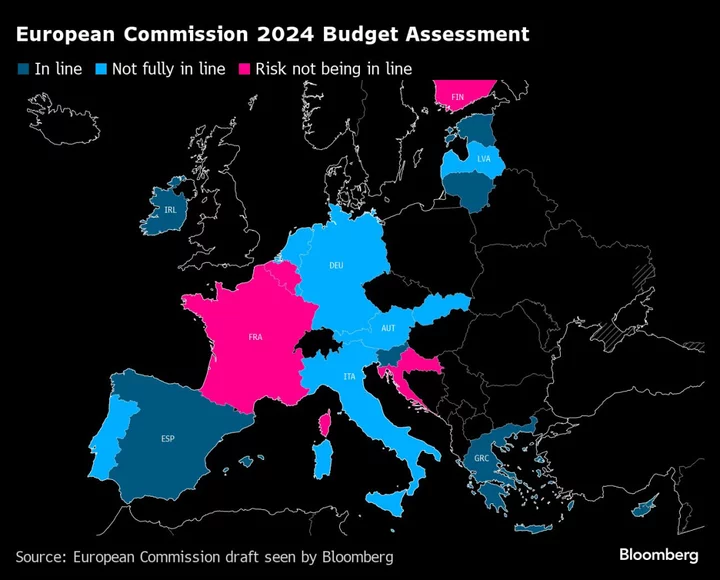
EU Is Set to Place France on Its Fiscal Watch List
France is at risk of flouting the European Union’s fiscal guidance while Germany and Italy are deemed not
2023-11-21 06:29

ASML to Invest €100 Million a Year in Berlin Chip Factory, Handelsblatt Says
Dutch semiconductor company ASML will invest €100 million ($109 million) in 2023 and the same amount annually in
2023-11-21 04:19

British Library Says Ransomware Attack Behind Weeks-Long Outage
The British Library said a ransomware attack by a criminal group is the cause of a technology outage
2023-11-21 01:51

Shell Paid Net UK Taxes for First Time in Years on Windfall Levy
Shell Plc paid net corporate taxes in the UK for the first time in at least four years
2023-11-20 23:56
